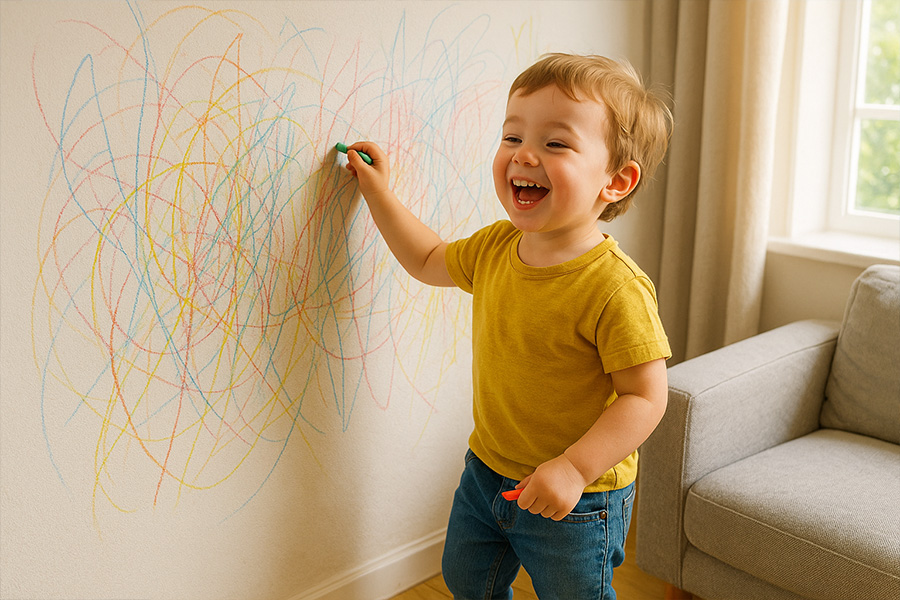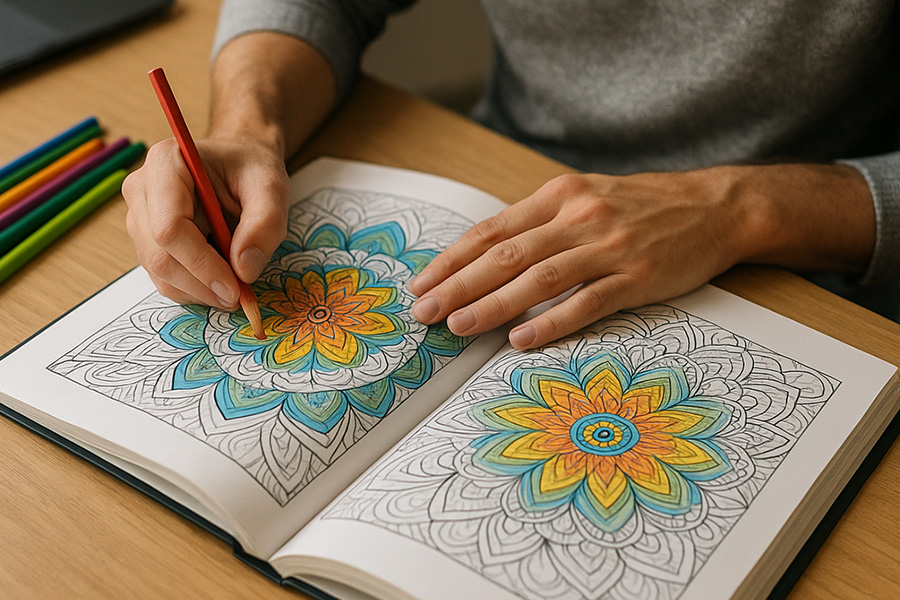Benefits of Coloring for Adults and Children
Over the past decade, evidence has grown showing that the benefits of coloring go far beyond entertainment: it helps parents, caregivers, and professionals cultivate mental calm, improve focus, and boost children’s creativity. Below you’ll discover five science-backed advantages, practical tips, and free resources to get started today.

1. Stress Reduction
Chronically elevated cortisol is linked to fatigue, low performance, and trouble sleeping. Coloring works as an accessible form of creative therapy: the repetition of strokes and color selection activate the parasympathetic nervous system, triggering a relaxation response similar to guided meditation.
A study involving 140 university students who completed six 10-minute sessions showed significant reductions in anxiety levels and increased subjective well-being (Source: Palmer-Cooper et al., 2024). While coloring, breathing slows to match the rhythm of the outline, promoting a steady heart rate and a sustained sense of calm.
Busy parents can dedicate just 15 minutes after work: simply choose a sheet, let the color palette guide your attention, and step away from screens and worries. This mindfulness dose through coloring becomes a daily break with no cost or side effects.
2. Fine Motor Skill Development
Between the ages of 2 and 5, holding a pencil, controlling pressure, and filling in shapes improve finger grip and hand-eye coordination. Montessori specialists recommend thick-outlined sheets that allow room for mistakes. The book My First Coloring Book offers these types of illustrations that strengthen hand muscles and prepare children for writing.
Coloring benefits extend into adulthood as well: individuals with mild carpal tunnel syndrome or early-stage arthritis report greater agility after regular sessions thanks to controlled micro-movements. A pilot study with menopausal women found that coloring mandalas reduced muscle tension and anxiety (Source: Kırca et al., 2024), improving their quality of life.
3. Creativity Boost
Choosing color combinations activates the prefrontal cortex and promotes creative problem-solving. In professional environments, the benefits of coloring multiply when color challenges are added:
-
Use only three colors and mix intermediate tones.
-
Alternate materials: pencil, brush marker, watercolor.
-
Color with your non-dominant hand to challenge laterality.
-
Apply the 60-30-10 rule (dominant, secondary, and accent colors).
These micro-tasks spark creativity in both children and adults. Coloring together as a family fosters conversations about emotions and removes the pressure to “draw well.” Once finished, share your artwork on social media using the family challenge hashtag and watch motivation bloom.
4. Mindfulness and Focus
Mindfulness doesn’t always mean sitting in meditation. Coloring mindfully means noticing each stroke, the texture of the paper, and your breathing rhythm. Studies in art therapy show that repetitive visual tasks reduce mental rumination and improve working memory.

Try using 10-minute timers: when it rings, stretch your arms, assess your concentration level, and return to work refreshed. This technique integrates seamlessly into remote work and active breaks.
Material | Key Benefit | Approx. Price
| Material | Key Benefit | Approx. Price |
|---|---|---|
| 120 gsm paper | Ink doesn’t bleed through | €5 |
| Brush marker | Smooth strokes and lettering | €12 |
| Soft-core colored pencils | Clean gradients | €8 |
Looking for a bigger challenge?
Join the newsletter to receive free printable coloring pages in PDF format and preview GS Editorial’s sample pages to get started.
5. Digital Detox
In Spain, we spend over six hours a day in front of screens. Replacing 30 minutes of scrolling with coloring offers the final benefits we’ll cover: visual rest, better posture, and improved sleep quality. Place a “no-device” box with coloring sheets and pencils in your living room so the whole family can unplug naturally. People who adopt this habit report more conversations and laughter, strengthening emotional bonds.
Frequently Asked Questions
Is coloring good for adults?
Yes; it reduces stress, improves focus, and boosts creativity. Studies compare it to guided meditation
health.clevelandclinic.org
How much time should I color to see results?
With just 20 minutes a day for two weeks, anxiety levels improve
tandfonline.com
What kind of sheets should I start with if I’m a beginner?
Start with large outlines; move to detailed mandalas or other sheets like our art book once you’ve mastered pressure control.
Can I use markers in regular paper books?
Preferably use 90 gsm paper; otherwise, place a cardstock sheet underneath.
Does coloring help kids with ADHD?
Structured activities help improve emotional regulation; always consult with an occupational therapist.
Are there any contraindications?
Only if there are hand injuries or pigment allergies. Use AP-Non-Toxic certified pencils.
